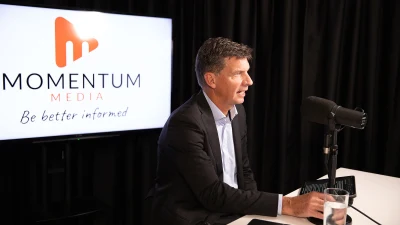The multiple realities of investment


Dominic McCormick explains why the adoption of a less dogmatic approach to investing could serve the industry well.
Most investors are too dogmatic about the role of predictions in managing investments. Either they believe that accurately predicting the future is the essential component to good investing, or they are convinced that no one can predict anything about the future so it’s not even worth trying.
I believe both attitudes are flawed and create significant barriers to successful investing. A much more practical and flexible approach is required; one that recognises the difficulty of accurate forecasting, that the path of the world is not predetermined and that a multitude of outcomes are possible.
Further, while developing a well-thought-out core view/outlook for investment markets is valuable, being steadfastly wedded to that view without the flexibility to readily consider alternative scenarios is a sure recipe for failure.
At the recent PortfolioConstruction Markets Summit, Tim Farrelly was commenting on three differing presentations about the investment outlook and said, “I find myself agreeing with them all but that can’t be right”.
I would ask – why can’t that be right? Not ‘right’ in the sense of each of them accurately predicting the future (and all three could be totally wrong).
But ‘right’ in the sense that it can be perfectly logical to consider and incorporate each of these different outlooks/scenarios in the process of building investment portfolios.
But before exploring such a ‘scenarios based’ approach to building portfolios further it is worth focusing on the limitations of the more commonly used approaches: striving to precisely predict the future on the one hand, and assuming all prediction is useless on the other.
Crystal ball gazing
We would all love to be able to consistently pick the future path of markets with a high degree of precision.
It would then be relatively easy to leverage these accurate predictions through derivatives into a multi-billion dollar fortune over time. In the real world however, consistent accurate prediction is impossible.
The financial world is just too complex, chaotic and driven by unpredictable human behavioural characteristics to allow this.
This doesn’t mean that focused, experienced investment professionals can’t have valuable insights about opportunities and risks across investment markets over time. However, even for the smartest investors, these insights often arrive in a messy, semi-coherent format, are usually far from precise, often involve a very uncertain time frame and come with various degrees of conviction.
With such insights also comes a high level of humility, a clear recognition that the insights may turn out wrong and that at times, one may not even have any strong insights. This is why having a range of scenarios is important.
Contrast this to the way the investment industry, financial media and some fund managers promote their predictions.
Their economists and strategists are willing to have a go at forecasting a multitude of variables every quarter or whenever asked from the S&P/ASX 200 Index, to the Australian dollar to interest rates and often at a specific point in time in the future.
In my opinion, most of these predictions are not worth the paper they are written on. Not just because their average track record is atrocious and no better – in fact often worse – than throwing darts, but because the very act of asking these ‘experts’ for such ridiculous ‘point’ forecasts gives them an undeserved respectability.
Even worse, it suggests to average investors that such precise forecasting is possible and useful. It’s no wonder that investors go looking for the latest guru to tell them what will happen and use this to build portfolios.
Even if you could find someone who has a better than average track record of forecasting, the risk is that this encourages a much more concentrated portfolio of just one or two assets that has a high risk of blowing up.
I liken it to driving a car with the steering wheel locked and no brakes, seat belts or airbags. Sure, it could get you to your destination if the road is dead straight, but a crash in which you are badly hurt is almost inevitable at some point along the way.
Building portfolios with excessive reliance on precisely predicting the future will fail. It’s just a matter of time.
Known unknowns
What about those at the other extreme who believe that no one has any insights into the future direction of investment markets, so there is no point trying?
After all this would save a lot of reading and thinking time. Just invest widely across the markets, preferably in passive funds and you will earn the ‘market’ risk premiums over time.
This approach certainly significantly reduces the risk of ‘blowing up’, but it is not the sure way to meet your objectives that some of its proponents argue.
As recent decades have shown entire major asset classes can perform poorly and produce negative returns – even over the long term.
To continue the earlier car analogy further, this approach is like being a hitchhiker jumping into the passenger seat of a stranger’s car – you really have little control over where you go or whether the car crashes.
You make no effort to determine the risks of floods, fires or bridge collapses ahead, comforted instead by the fact that the car has got this far successfully.
What’s the scenario?
The ‘scenarios’ approach, on the other hand, is about building alternative views of the economic and investment world over the next few years and developing views about the assets/themes that are likely to perform well, or less so, in each scenario.
One can then be in a better position to build robust portfolios with true diversification.
This approach is not about focusing on the very short term (ie, weeks or months) because a lot of this is noise and based on sentiment.
Nor is it about focusing on the very long term (ie, decades), because this time frame misses many major movements within them and is beyond the practical investment horizon of most investors. In our view it is about looking out over periods ranging from on to five years, with three years a reasonable focal point.
One of the scenarios developed may well be your best assessment of how things are likely to pan out and it may make sense to skew your portfolio’s asset allocation and themes towards this view, but the key is you are also considering alternative scenarios so are not reliant on a one dimensional view.
The value of thinking and developing a portfolio with this scenarios-based approach is:
- It helps to enforce true diversification (ie, incorporating exposure to assets that will do well in a range of different environments);
- It provides alerts to the major risks that may affect a portfolio and assists in identifying good hedges for such risks;
- It also identifies investment/ asset opportunities that can do well in a specific alternative environment making it easier and quicker to implement these if that environment becomes more likely; and
- It helps enforce humility and flexibility by recognising that one’s core view can easily be wrong.
This is not so much about predicting the future but about anticipating and preparing for a range of futures or scenarios. In the words of former England football manager Kevin Keegan: “I know what is around the corner – I just don't know where the corner is."
The real value in developing a number of alternative scenarios is therefore that they help to create true diversification, and can act like an early warning system that your core/favoured outlook is wrong.
Without alternative scenarios you are more likely to remain wedded to your core outlook, despite growing evidence suggesting otherwise.
In some respects this approach always results in sub-optimal portfolios from a strict theoretical sense because you are encouraged to incorporate assets/investments that will perform poorly in some scenarios.
However, in doing so you are making the portfolio more robust to adverse environments.
To once again carry the earlier motoring analogy further, the scenarios approach puts one firmly in the driver’s seat with access to air bags (disaster protection) and to alternative vehicles if your main one breaks down.
It may be more complex and more expensive but it is more likely to avoid disaster and get you to your long-term objectives.
Of course developing scenarios is only part of the portfolio building process.
One needs to also consider asset valuation as well as sentiment and momentum.
For example there are circumstances where an asset is so cheap from a valuation perspective that it can still do well in what would normally be an adverse environment /scenario for that asset class.
Getting down to specifics
How many scenarios are appropriate? While it is possible to come up with a lot, I think it is pointless going beyond five or six.
The aim is not to come up with a series of benign scenarios (any diversified portfolio will cope with these) but to develop a small range of more extreme but plausible scenarios which are considerably different from one another.
So what are the key scenarios today?
The following six scenarios cover a range of outcomes, including serious risks as well as opportunities, for portfolios today:
- Drawn out economic recovery/markets trade in large ranges but little progress. Global imbalances remain;
- Return to serious recession/depression with accompanying deflation pressures;
- Economic growth surprises – central banks tighten early – equity bull market resumes after initial weakness;
- Slow to modest economic growth but unstable bubbles develop on easy policy;
- Sovereign debt restructuring/ defaults create currency and inflation instability; and
- China boom/ bust and resources slowdown.
For each of these scenarios there is a more detailed description and an outline of the assets/investment themes that would perform well or less so.
The aim is not to be precise or quantitative – this is just the start of the process – but rather to highlight risks and opportunities while still allowing one to skew a portfolio towards the outcomes one believes are most likely.
Of course this scenarios-based approach is more difficult to develop, implement and explain than one that is either built with only one outlook in mind, or one that ignores the outlook and simply invests across the spectrum of assets without any view.
Even then, developing scenarios is just one step of a portfolio building process that recognises the difficulty of forecasting but attempts to utilise insights in a more flexible and practical way.
This approach can never provide the complete picture some idealists are seeking, but even an incomplete map is better than no map at all.
Dominic McCormick is chief investment officer at Select Asset Management.
Recommended for you
In this episode of Relative Return, host Laura Dew speaks with Steve Johnson, founder and CIO at Forager Funds Management, about the impact of human psychology on investing and whether fund managers can ever beat algorithms.
In this episode of Relative Return, host Laura Dew speaks with Daniel Bower, chief product officer at FinClear, and Bill Keogh, chief executive of Transact1 (a FinClear subsidiary) to discuss cash as an asset class.
In this episode of Relative Return, host Maja Garaca Djurdjevic is joined by shadow treasurer Angus Taylor to discuss the current state of the financial advice sector, the economy, the housing affordability crisis and more.
In this episode of Relative Return, host Laura Dew speaks with Andrew Mitchell, director and senior portfolio manager at Ophir Asset Management, about why he loves working in fund management and the lessons he’s learnt in a decade of running a firm.












